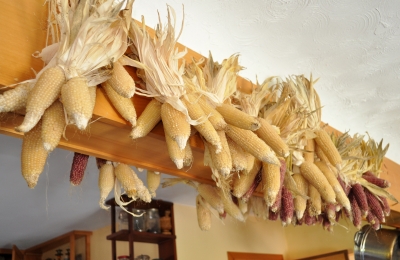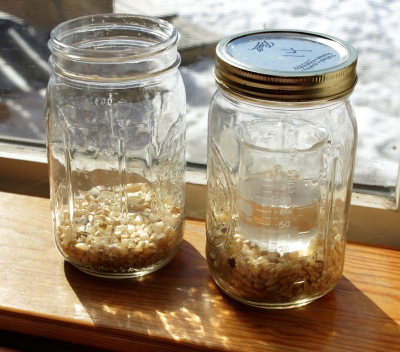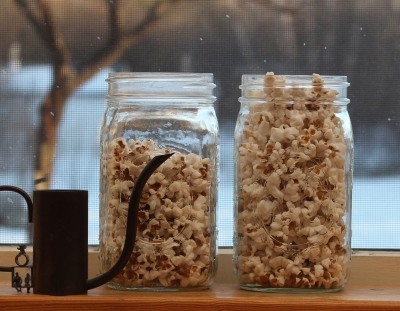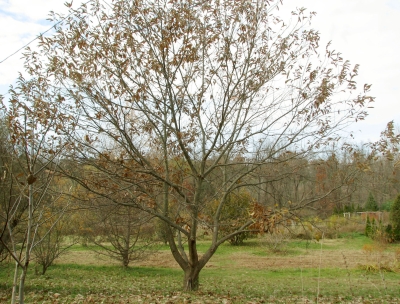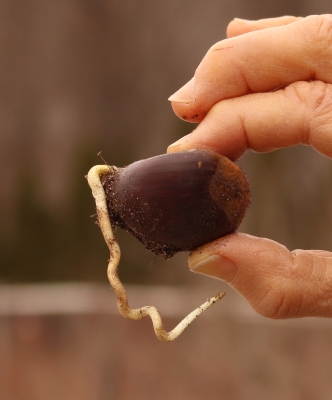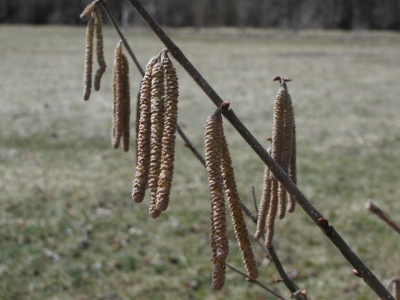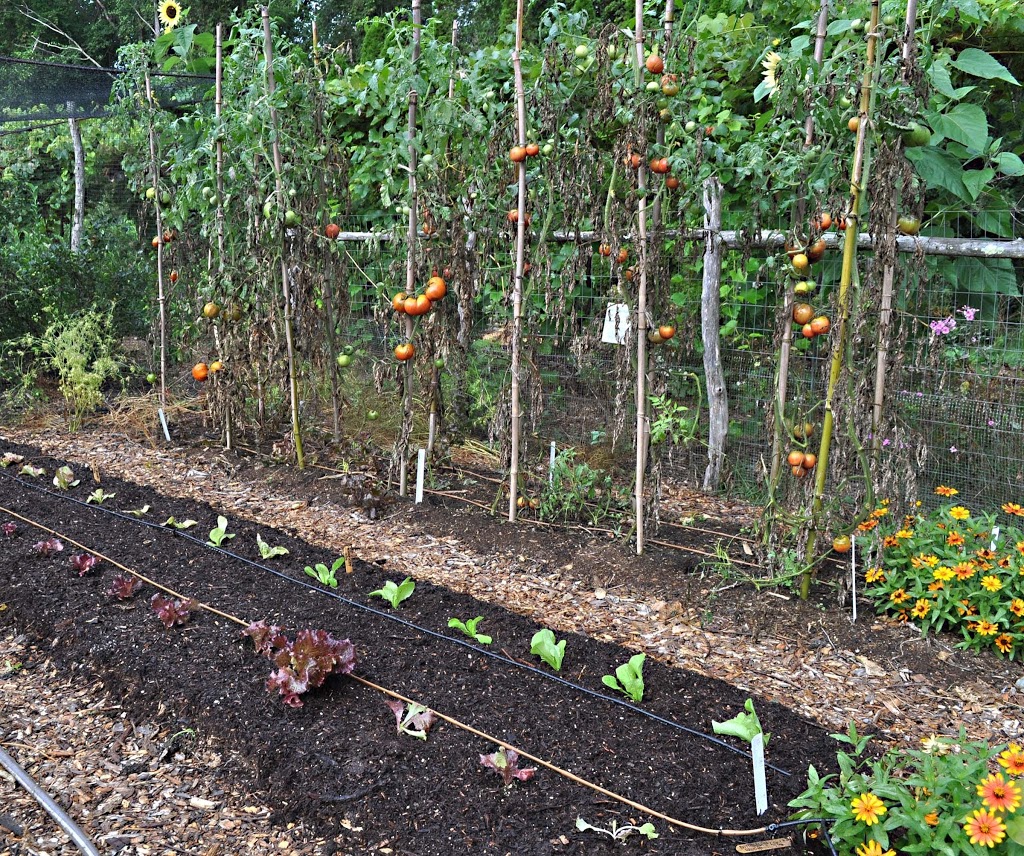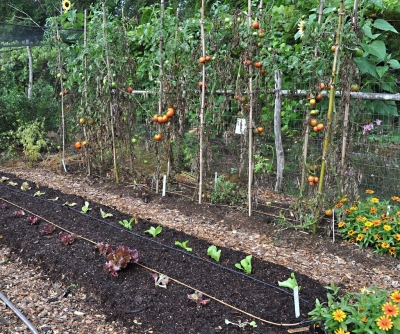The End of Chestnuts? No!
Blight Strikes
I looked up into the tree that I had planted 20 years ago and saw what I had long feared: two major limbs with sparse, undersized leaves. Blight had finally got a toehold on the Colossal chestnut tree, which, for the past 15 years, has supplied us with all the chestnuts we could eat. (“Colossal” is the variety name, apt for the size of the chestnuts it produces.)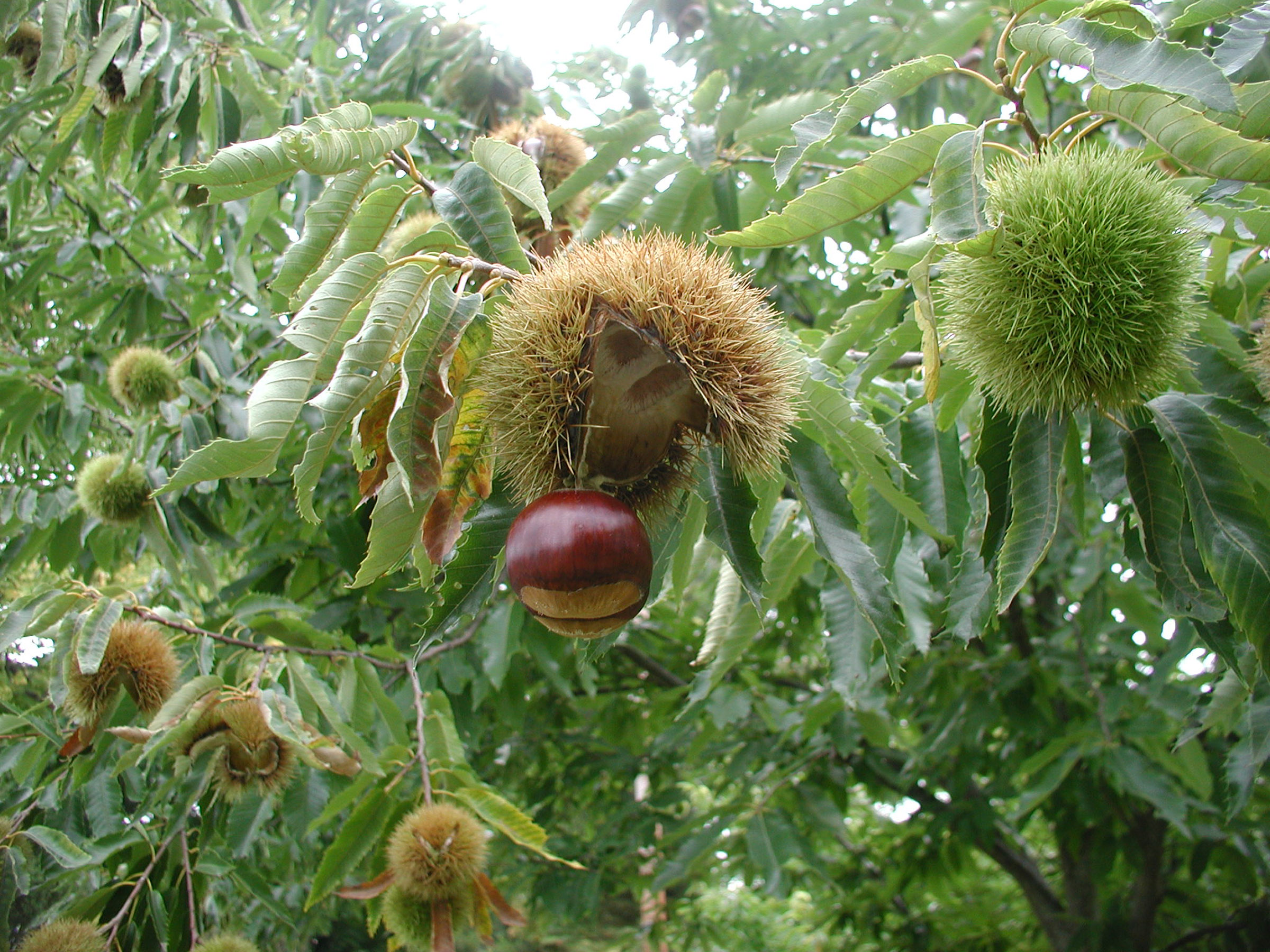 My first inclination, before even identifying chestnut blight as the culprit, was to lop off the two limbs. Once I got up close and personal with the tree, the tell-tale orange areas within cracks in the bark stared me in the face.
My first inclination, before even identifying chestnut blight as the culprit, was to lop off the two limbs. Once I got up close and personal with the tree, the tell-tale orange areas within cracks in the bark stared me in the face.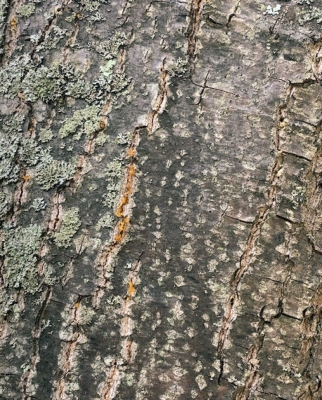 There is no cure for chestnut blight. Removing infected wood does remove a source of inoculum to limit its spread. In Europe, the disease has been limited by hypovirulence, a virus (CHV1) that attacks the blight fungus. Some success has been achieved using a naturally occurring virus found on blighted trees in Michigan.
There is no cure for chestnut blight. Removing infected wood does remove a source of inoculum to limit its spread. In Europe, the disease has been limited by hypovirulence, a virus (CHV1) that attacks the blight fungus. Some success has been achieved using a naturally occurring virus found on blighted trees in Michigan.
There is some evidence, although not confirmed with rigorous scientific testing, that mud packs made from soil taken from the base of a tree, can slow or halt spread of the disease. The mud packs need to be applied to each disease canker and then held in place with shrink wrap, or painted or sprayed on, followed by a layer of latex paint. Not an easy job as you move higher and higher up into the tree.
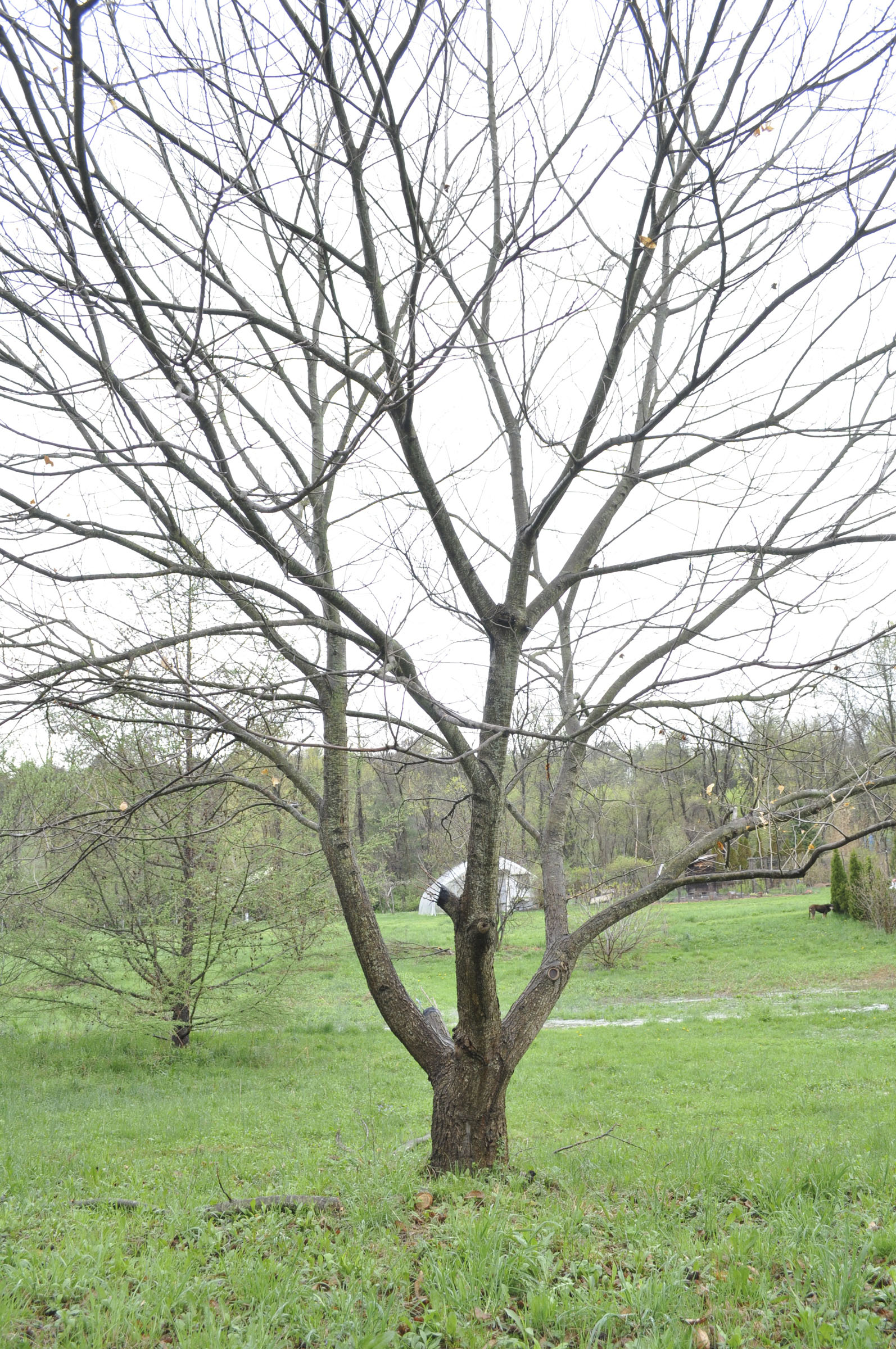
One of my seedling Chinese chestnuts
Resistance
Chestnut species vary in their response to the blight fungus. American chestnut (Castanea dentata) is very susceptible; the fungus arrived here from Asia in the early 1900s, and within a half a century had killed billions of trees. European chestnut (C. sativa) was also susceptible, but was protected by the naturally spreading fungal virus.
Chinese chestnut (C.mollisima) and Japanese chestnut (C. crenata) both have some resistance — but not immunity — to the disease, and have contributed their genes to resistant varieties. Collosal, in fact, is a hybrid of European and Japanese chestnuts, and it has some resistance to blight. But, evidently, not enough. I am hoping that the previously extremely wet season contributed to the evidence of symptoms, and that some drier seasons will keep the tree alive longer.
I’m not planning to sit back and let my chestnut-eating days shrink away to nothing. For starters, keeping my tree vigorous with pruning and good fertility might keep small cracks, into which new infections could enter, from developing. Also, chestnut trees need cross-pollination, so I do have other varieties planted. Also planted 20 years ago was Marigoule, also yielding fairly large nuts. Some sources say “blight susceptible,” others saw “blight resistant;” my large tree shows no signs or symptoms of blight. Yet.
This spring I planted two more European x Japanese chestnut hybrids. I shouldn’t have felt so confident that MY trees wouldn’t get blighted. Precoce Migoule and Marsol, the two varieties I planted, are, like Marigoule, allegedly “blight resistant,” or not.
Generally, the Chinese varieties and their hybrids are the most blight resistance. And I have two of those, actually one tree on which I grafted two different varieties. Qing is pure Chinese with easy-to-peel nuts having excellent flavor. Peach, the other variety, is also pure Chinese, though the nuts are ho-hum in flavor. Both varieties have borne for me for a number of years, yet the nuts never seem ripe once they drop.
One More Thing . . .
Is your head spinning yet? One more wrinkle in this chestnut saga. It turns out that if a pure or hybrid Chinese variety pollinates a pure or hybrid Japanese variety, the latter gets dark staining of the nuts, with a loss in quality. So I was phasing out (with a chainsaw) some other Chinese varieties I had planted. Now, with blight lurking in the wings, I’m having second thoughts.
Enough negativity about chestnuts. On the positive side, Chestnut trees’ shiny, green leaves are attractive and turn a rich golden yellow color in fall. The nuts are tasty and nutritious. With their high starch and low fat content, they’ve been called “the bread tree.” Gluten-free bread tree, for those who care about gluten.
So, do plant chestnuts. Two different varieties for cross-pollination. If I was planting again — and I might — I’d seek out trees from among Qing, Benton Harbor, Everfresh, Gideon, and Mossberger. Or, for Japanese varieties and their hybrids: Maraval, Marigoule, Labor Day, Precoce Migoule, and Marsol.
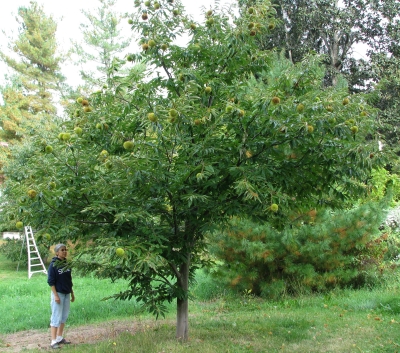
Colossal, at 10 years old
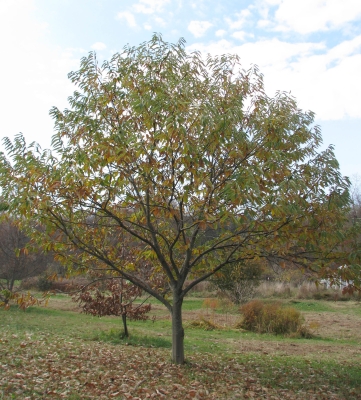
Colossal, in autumn, 12 years old

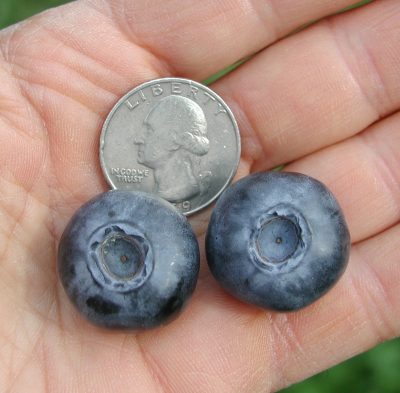
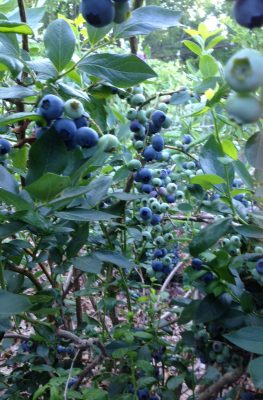 As I write, in September, the variety Elliot is still bearing ripe berries.
As I write, in September, the variety Elliot is still bearing ripe berries.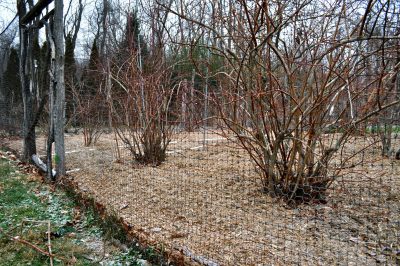
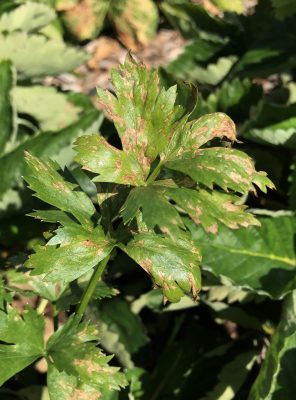 Last fall I thoroughly cleaned up diseased plants, even planted some celeriac this year in the greenhouse. Failure occurred both outdoors and in the greenhouse, although lots of rain and heat could have helped (the fungi or bacteria, not me).
Last fall I thoroughly cleaned up diseased plants, even planted some celeriac this year in the greenhouse. Failure occurred both outdoors and in the greenhouse, although lots of rain and heat could have helped (the fungi or bacteria, not me).